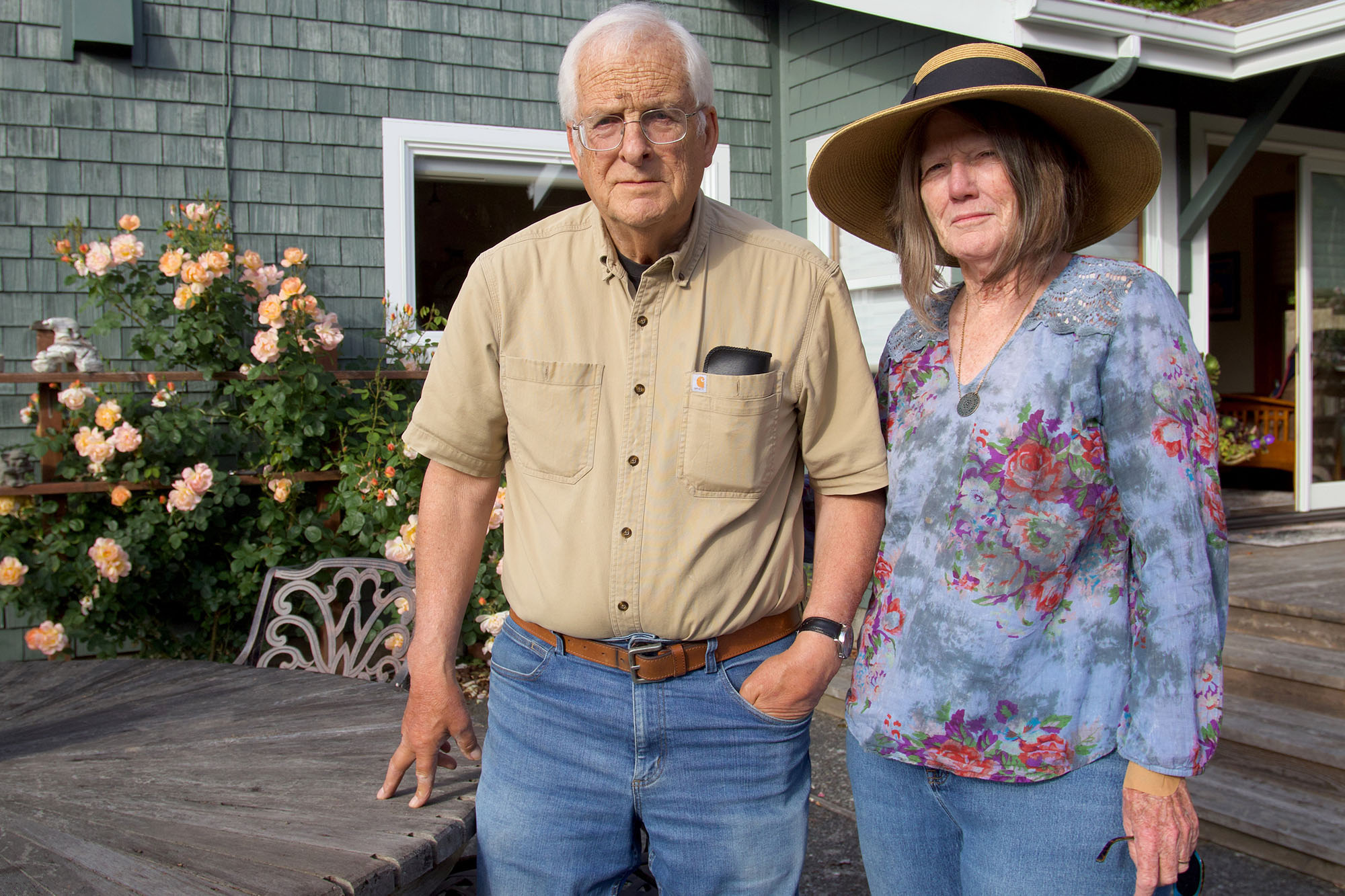
Aida Meza has been working as a promotora de salud, a community health worker, since she moved across the border from Tijuana, Mexico, to the San Diego area 23 years ago. She came to Chula Vista with her husband, an American citizen, so they could send their kids to better schools.
“At first I cried every day because I wanted to go back to my home,” she said. Then the principal at her children’s school, Vista Square Elementary, asked her if she wanted to do volunteer work. The school was creating an on-site Family Resource Center to serve its Spanish-speaking immigrant families and make them feel welcome while ensuring that their children had access to health care.
“They needed someone to reach out to the families and bring them in. Did I want to do it?” she was asked. Meza said yes. She began working at the school while taking classes on community health and family engagement. She has worked as a promotora ever since, sometimes as a volunteer, sometimes as a paid employee. Today, she does both.
In her day job with the Chula Vista Community Collaborative, Meza helps people with chronic health conditions address nonclinical needs. She offers emotional support and practical assistance with everything from getting healthy food to seeking legal services. She’s also Tia Aida, a trusted neighbor whom people from the community call for advice and assistance — especially since the COVID-19 pandemic landed in California.
Pandemic Worries
“My old clients — everybody is asking me about COVID, about resources. Can they see me? How can I help them?” she said. “They are desperate. They don’t have money to pay rent, to get food, or diapers for their children. The first month, it was really crazy. They didn’t know where to go, what to do.”
Many clients in immigrant families are avoiding social and health care services. Using services, they worry, could violate the Trump administration’s new public charge rule, which threatens to disqualify immigrants who have used certain public benefits from getting a green card. “They are so afraid,” she said.
A community health worker (CHW) is a frontline public health worker who is a trusted member of and/or has an unusually close understanding of the community served, according to a recent brief prepared by the Center for Health Care Strategies. This trusting relationship enables the CHW to serve as a link between health and social services and the community to facilitate access to services and improve the quality and cultural competence of service delivery. A CHW also builds individual and community capacity by increasing health knowledge and self-sufficiency through outreach, community education, informal counseling, social support, advocacy, and other activities.
Promotores are a subset of CHWs who serve Spanish-speaking communities. They are frequently women and are characterized as lay health workers with the ability to provide culturally appropriate services informed by their lived experience.
“Everybody is asking me about COVID, about resources. . . . They are desperate. They don’t have money to pay rent, to get food, or diapers for their children. . . . They didn’t know where to go, what to do”
—Community health worker Aida Meza
Meza is one of six community health workers employed by the community collaborative and one of 59,000 CHWs nationwide, according to the Bureau of Labor Statistics. Almost 6,000 of them are in California. Many experts think the CHW workforce is larger than these figures indicate because community health workers and promotores have a variety of titles, and many employers do not use the CHW job classification code. Now, as the nation struggles to emerge from the pandemic, many advocates are calling for the creation of a “community health corps” staffed by tens of thousands of CHWs who could conduct testing and perform contact tracing, which involves identifying and counseling people who may have been exposed to COVID-19. For those individuals, the CHWs would arrange a variety of health and social services.
Such a workforce would provide jobs to people who badly need them and respond to enormous needs for social, material, and psychological support, especially among low-income communities that have been disproportionately afflicted by the virus.
Data on CHW Effectiveness
Community health workers have proven their effectiveness in numerous studies. The best-studied US program is the 10-year-old Center for Community Health Workers at the University of Pennsylvania in Philadelphia. It has been evaluated three times in randomized controlled studies, and each review found that using CHWs improved health outcomes and reduced hospitalizations. A recent study in Health Affairs demonstrated cost savings, too, finding that every dollar invested in the program reduced Medicaid spending by $2.47 in a one-year period.
An evaluation by the Centers for Disease Control and Prevention (no longer available) found “strong evidence” that using community health workers as part of multidisciplinary teams “improved health-related outcomes” in people with chronic disease.
Margarita Holguin, executive director of the Chula Vista Community Collaborative, said the community health workforce could easily grow. In addition to Meza and 5 other promotores on her paid staff, another 10 work as volunteers and are qualified to be employed.
Maria Lemus, executive director of Vision y Compromiso, an association that trains and advocates for CHWs, said her network includes more than 4,000 CHWs and could train and activate many more. “We have thousands of people, mostly women, who are willing to go out and help,” she said. “Take us and deploy us. Let us be a help. We’re such an underutilized resource.”
Expanded hiring of promotores would bring money into these communities, and the promotores would be able to distribute food, masks, and hand sanitizer, as well as connect with people in the community to learn what else they need. “We’d find creative ways that we can get resources out to people who need them,” Lemus said.
The Chula Vista collaborative recently joined a new initiative started by a nonprofit group that has developed a novel approach to pay for community health workers. The nonprofit, Be There San Diego, has been working for 10 years to reduce heart attacks and strokes, especially among residents with low incomes. The group trains CHWs in prevention techniques and encourages primary care practices to hire them. An approach begun last year involves getting health plans to pay for community health workers by creating what Executive Director Kitty Bailey calls a “social IPA,” or independent practice association, modeled on the groups that physicians form to execute agreements with health plans.
So far, Bailey has contracted with four health plans, bringing in money that goes to the collaborative and other community groups. They in turn hire promotores to work with Medi-Cal patients. Eight workers have been hired so far, a number Bailey hopes to double this year, especially if Be There San Diego wins a county contract to perform contact tracing.
The Art of Relating to Clients
When she meets clients, Meza begins by “trying to make people feel we are really interested in helping them,” she said. “If they think you’re just trying to get information, they’ll close their doors. Once we have a relationship, they start opening their hearts and talking about the barriers they face and the mental health and social services they need.”
These days, working only by phone because of the pandemic, Meza must work extra hard to win the confidence of new clients — or to get them to answer her calls. “Sometimes they don’t want to talk, or they hang up the phone,” she said. She calls again, sends emails or letters — whatever it takes to get through.
Meza is nothing if not creative. Last year, she was assigned to work with an older woman who has a heart condition and diabetes. On the first visit, the woman welcomed her warmly, but her adult daughter seemed resistant and interrupted her mother frequently. Meza didn’t try to confront the problem but arranged on future visits to spend time separately with each woman.
Meza learned how stressed the daughter was attending to her children and her mother. She listened to the mother cry because she felt criticized by her daughter. She developed relationships with both women, lined up some services for the daughter, and brokered a compromise.
“The daughter started going to a class and had more patience for her mother,” Meza said. “Mom started talking more with the daughter about her feelings. They are happier now.”
Over the past three years, California counties have hired 555 community health workers in pilot programs that are part of the Whole Person Care initiative, funded through Medi-Cal, that aims to improve the health of the most marginalized patients. The workers help homeless people get into supportive housing, provide intensive support to people coming out of psychiatric hospitals, and help inmates with serious medical or behavioral health conditions develop reentry care plans.
Whole Person Care
The Los Angeles Whole Person Care pilot hired 186 community health workers, a third of the statewide total. Medical Director Belinda Waltman said an evaluation of the program will determine whether it reduced the use of acute health services and lowered the number of people returning to hospitals, jails, and prisons. The CHW model, Waltman said, has two especially powerful features that increase trust and rapport with clients — a shared lived experience and the ability to meet clients in their homes or communities outside traditional clinical settings.
“We can see that the community health workers have had a tremendous impact on their individual clients,” she said. After years of demonstrated effectiveness — but modest growth in numbers — the future of community health workers is uncertain. At the very moment that advocates are working to scale up health worker programs to meet the massive social needs of the moment, the pandemic has impeded the ability of state and local governments to fund such an expansion. California, for example, is staring down a $54 billion budget shortfall as a result of COVID-19, so if the state and counties want to significantly expand the number of CHWs to respond to the pandemic, they will need significant federal support.
Something needs to give, said Rishi Manchanda, MD, MPH, president and chief executive officer of HealthBegins, a Los Angeles–based consulting firm that helps health systems address community conditions that give rise to poor health.
“Every disaster in modern history has always had in the response and recovery phase not just formal health care responders but also a community-based health workforce,” Manchanda said. “We don’t have — but we desperately need — that infrastructure in the US right now.”
Authors & Contributors

Rob Waters
Rob Waters is an award-winning health and science writer whose articles have appeared in BusinessWeek, Mother Jones, Stat, San Francisco magazine, the San Francisco Chronicle Sunday magazine, the Los Angeles Times, and many other publications. He is the founding editor of MindSite, a digital publication covering mental health news scheduled to launch in fall 2021.

David Poller
David Poller has worked as a photojournalist at newspapers and international wire services from Miami to Alaska. He shoots editorial and commercial assignments in Southern California and is a photo editor for the New York Times. Poller is a member of the National Press Photographers Association and the Association of LGBTQ Journalists.





